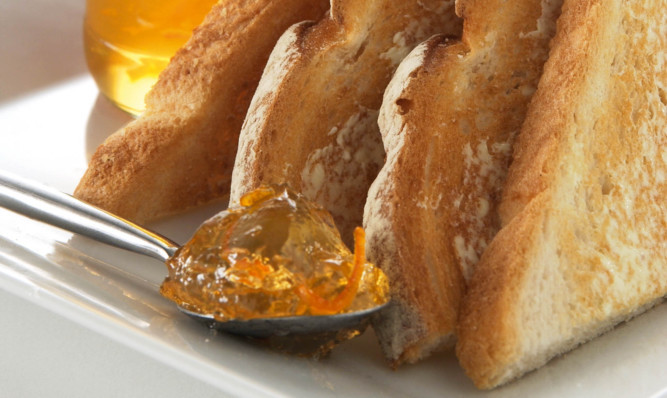A top food historian has sparked fury by trying to shred the widely-held belief marmalade was invented in Dundee.
Ivan Day, who appears regularly on television, described claims the orange breakfast spread was devised on Tayside by 18th Century confectioner Janet Keiller as “nonsense”.
His comments, made at the World’s Original Marmalade Awards in Cumbria at the weekend, provoked a bitter war of words between foodies.
He said: “There’s no real evidence for all the stuff about Janet Keiller, though I’d get my throat cut if I said that in Dundee.
“By the 1660s there were English recipes for apple jelly with strips of peel for both appearance and flavour.
“This undermines the rather wonderful story about Janet Keiller.
“It does worry me when food becomes embalmed in nationalism.”
Legend has it that Mrs Keiller was first to make the marmalade.
It is said she created a batch of the preserve from a bargain shipload of bitter Seville oranges at Dundee harbour in the late 1700s.
Her family earned a fortune from the creation and went on to become the most successful confectioners of their generation.
But Mr Day, a close confidante of celebrity chef Heston Blumenthal, is not convinced the Keillers story stands up to scrutiny.
He also makes toast of the idea that the modern word marmalade was connected to Mary Queen of Scots.
It has long been believed that the controversial and tragic 16th Century monarch was given marmelos, an early form of marmalade made of Portuguese quinces, as a remedy for seasickness on the boat over from France in 1561.
It was so effective that she asked for it again while living in Scotland, with the remedy for “Marie la malade” becoming known as marmalade.
Mr Day said: “Queen Elizabeth and Shakespeare were enjoying an early form of marmalade at the same time as Mary Queen of Scots.
“Quince paste was being imported to docks at London, Bristol and Liverpool from the 13th Century. So this story has no grounds in reality at all.”
Yesterday Shirley Spear, one of Scotland’s most successful chefs who is also a judge on the awards, launched a staunch defence of Mrs Keiller.
She said: “Marmalade as we know it today is certainly Janet Keiller’s invention but there are lots of very ancient Scottish recipes for marmelos.”
